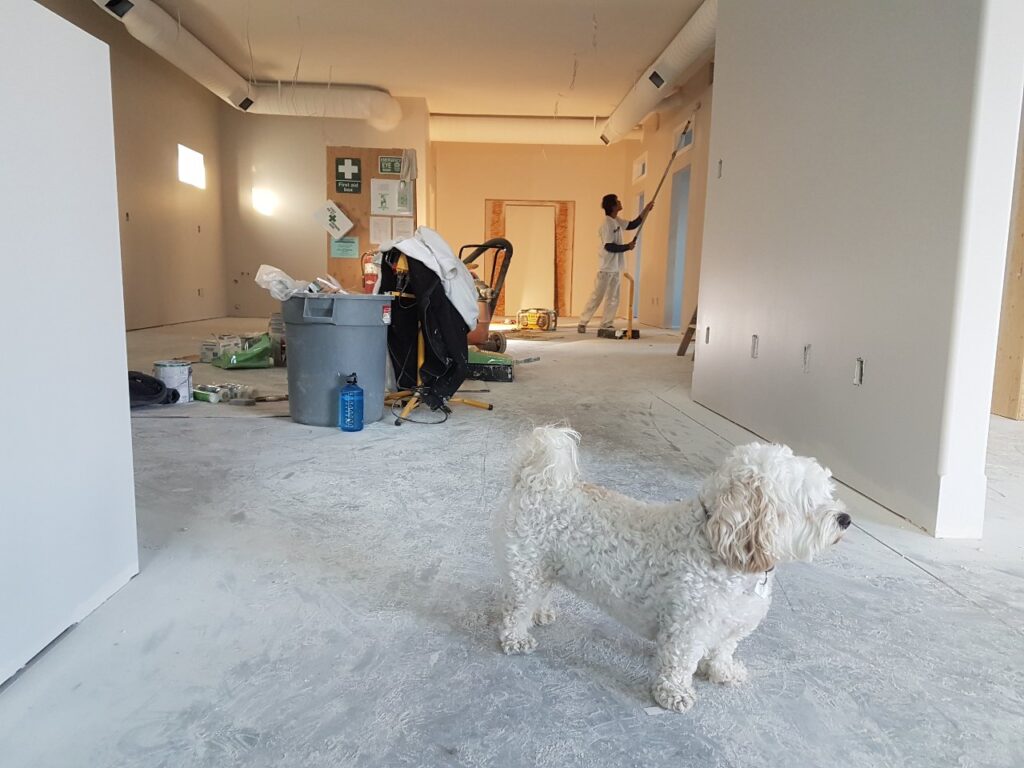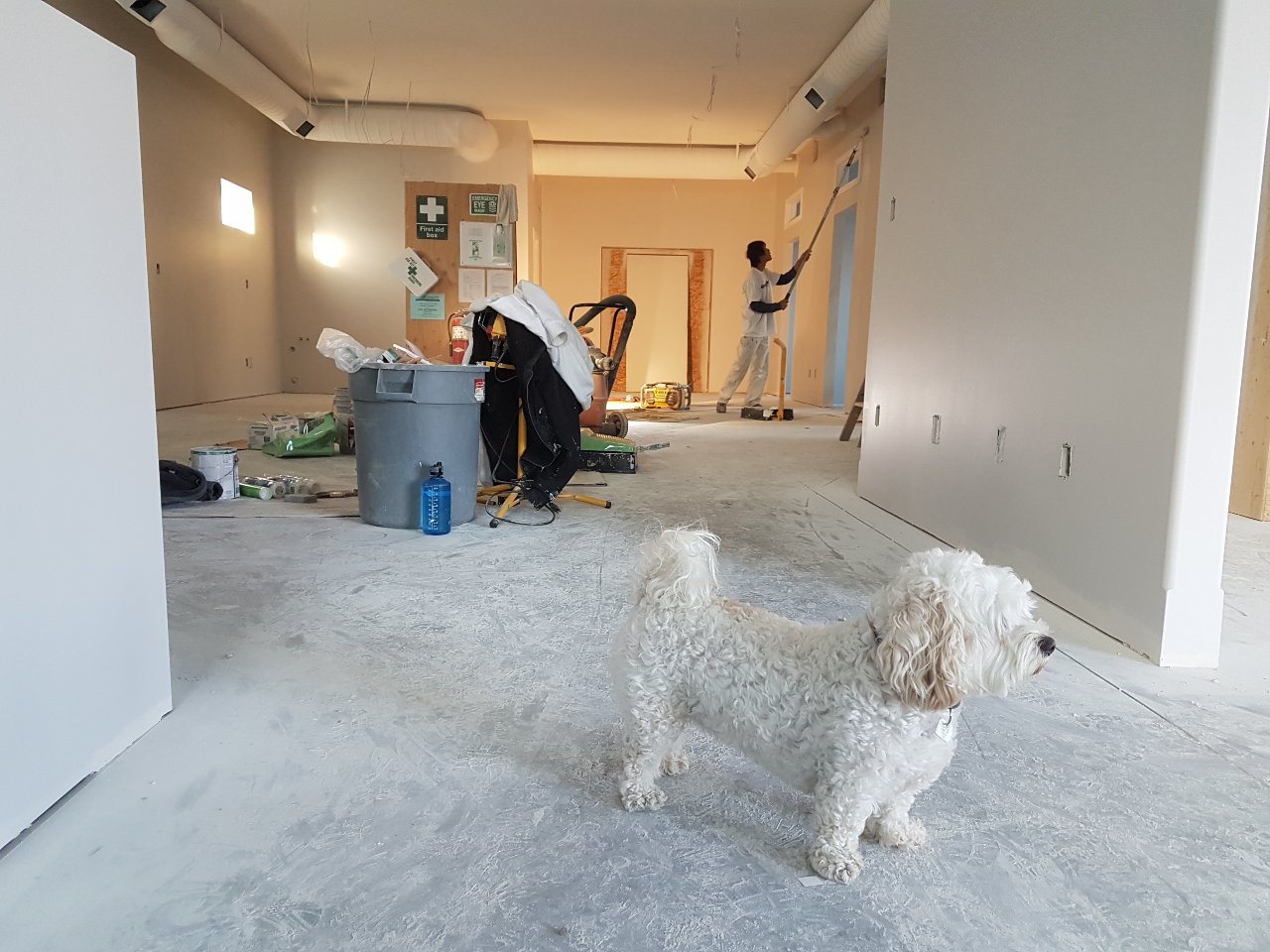This Oregon lien law summary is a comprehensive guide that explains Oregon construction lien law and illustrates how property owners, contractors, laborers, consumers, and subcontractors can take steps to protect themselves — sometimes, by filing a mechanic’s lien in Oregon. Below Northwest Lien translates each section of the Oregon legislature regarding construction liens to ensure every eligible lienholder understands their rights.
Please note that the contents of this article should not be taken as legal advice; we’re not lawyers, and our only official advice would be to seek professional legal counsel for your unique situation. Nevertheless, we’re hoping we can help, generally, guide your next course of action. Feel free to contact us if you have any questions about your unique situation or are interested in our lien services.
A construction lien, also often called a mechanic’s lien, is a legal claim that is made against a property by a contractor, subcontractor, or supplier who has supplied labor or materials to the property but has not been paid for their work or supplies. The lien is used to secure payment for the work or supplies that were provided.
The increasing number of construction projects makes it critical to understand how to get paid for your time, effort, and materials. While construction liens are common across the globe, they vary from nation to nation. In the United States, the construction lien laws differ slightly from state to state.
87.007 “Protection from construction liens perfected after sale of residential property completed; requirements; seller options; rules; delivery of form to purchaser; penalty; damages; defenses.”
If a property owner wants to sell a residential building, the seller or contractor should ensure the buyer is protected against a construction lien before the sale is completed. If a lien is filed during the sale of the property, the original property owner (i.e., the person selling the property) must take care of the lien before the sale is complete — either by paying it or proving it is invalid.
Once the sale is completed, claims to lien can still be officially filed, or perfected.
This section allows empowers a buyer to bring an action to recover up to twice the number of actual damages should the previous owner violate the law during the sale process. For the owner, the best defense against this would be to prove that the lien claim against the sold property is invalid. Furthermore, the owner can satisfy the lien (pay the full debt) and secure the release of the claim to the lien, only if the lien is valid.
87.010 “Construction liens; who is entitled to lien.”
The Oregon construction lien illustrates that any individual who makes improvements to a property, rents equipment, supplies materials, or provides services for improvement has the right to collect payment if they are not compensated. This includes:

87.015 “Land and interests therein subject to lien; leaseholds.”
Both the land and the site required for convenient use and the occupation of the improvement constructed can be subject to the lien. This means that if you performed work on a piece of land adjacent to the primary property, for example, you can place a lien on only the piece of adjacent land on which you actually worked to improve. The court determines, following the lien’s foreclosure, whether the lien applies.
However, in situations where the individual who requested the improvement on the land owned less than a fee simple estate, then only the individual’s interest shall be subject to the lien.
When the interest of the individual who requested the improvements is a leasehold interest, and the individual has forfeited the rights, then the purchaser of the improvements is considered the assignee of the leasehold term.
87.018 “Delivery of notices. (1) Except as provided in ORS 87.093, all notices required under ORS 87.001 to 87.060 and 87.075 to 87.093 must be in writing and be delivered in person or by registered or certified mail.
(2) A notice that must be given under ORS 87.001 to 87.060 or 87.075 to 87.093 to a mortgagee must be delivered to the mortgagee only if the name and address of the mortgagee appear in a mortgage of record or a trust deed of record as required under ORS 205.234 (1)(b) or in the instrument that assigns a mortgage or trust deed as required under ORS 205.234 (1)(g).”
Notices are crucial, and a formal approach is necessary to provide the evidence to justify a lien.
In most instances, all notices must be in writing and be delivered individually, by personal delivery with a return receipt, or by registered or certified mail.
If a notice must be given to the mortgagee, it can only be delivered if the name and address of the mortgagee appear in a trust deed of record or mortgage of record.
87.021 “Notice to owners; notice from owner to original contractor; effect of failure to give notice.”
Those who didn’t contract with the property directly (e.g., subcontractors, laborers, and material suppliers) have to send an Oregon Notice of Right to Lien document to the property owner to, effectively, let them know you’re on the project and expect to be paid for your work. Subcontractors can give this notice of the right to lien to the site owner at any point during the improvement progress. Keep in mind the contractors have to be registered/have a valid Oregon contractor’s license to have lien rights.
An individual who provides services, materials, or labor for commercial improvement need not give the notice to perfect a lien. “Commercial improvement” refers to structures that are not associated with residential buildings.
87.023 “Notice of right to lien; form of notice.”
The format of the notice of right to a lien is crucial because it ensures that you have included all the necessary details. Here’s the general format:
Line 1: “NOTICE OF RIGHT TO LIEN.”
Line 2: a warning for the recipient to read the notice; otherwise, they risk paying twice for the same service. “WARNING: READ THIS NOTICE. PROTECT YOURSELF FROM PAYING ANY CONTRACTOR OR SUPPLIER TWICE FOR THE SAME SERVICE.”
Lines 3: the owners’/recipients’ names and the mailing date
Lines 4–5: the owners’/recipients’ address
“This is to inform you that ____________ has begun to provide ____________ (description of materials, equipment, labor or services) ordered by ____________ for improvements to property you own. The property is located at __________________.
A lien may be claimed for all materials, equipment, labor and services furnished after a date that is eight days, not including Saturdays, Sundays and other holidays, as defined in ORS 187.010, before this notice was mailed to you.
Even if you or your mortgage lender have made full payment to the contractor who ordered these materials or services, your property may still be subject to a lien unless the supplier providing this notice is paid.”
THIS IS NOT A LIEN. It is a notice sent to you for your protection in compliance with the construction lien laws of the State of Oregon.”
Final lines: the contractors’/senders’ name, address, and phone number
The notice must explicitly claim that it is not a lien but rather a notice. You should put your name, address, and telephone number on the notice to ensure that you can be contacted for any questions or clarifications.
The reverse side of the notice will have a brief summary of Oregon’s lien law. This is a section that allows the recipient to understand the meaning of the notice and the right to lien.
The format of the notice to the right to lien will contain:
87.025 “Priority of perfected liens; right to sell improvements separately from land; notice to mortgagee; list of materials or supplies.”
A lien created under ORS 87.010(1) and perfected under ORS 87.035 upon all improvement is preferred to all prior mortgages, liens, and machinery on the particular land upon which improvements were made. Enforcing such a lien involves selling the land separately from the improvements. The purchaser will have 30 days to remove the improvement unless the removal of such improvements is stopped by the court.
Liens for supplies and materials cannot have priority over any trust deed or recorded mortgage on either the improvements or land unless the notice of the right to lien is delivered to the mortgagee.
The notice of the right to lien is the copy of what was given to the owner within the eight days following the delivery of the supplies.
87.035 “Perfecting lien; filing claim of lien; contents of claim.”
Every individual claiming a lien needs to “perfect” the lien within 75 days of either the completion of the project or the date of last providing materials or services, whichever is earlier. Read more about important Oregon lien deadlines.
“Perfecting” a lien means filing a claim of lien with the recording officers of the counties where the improvement or some part of it is located — or, essentially, officially filing all of the required documentation with the appropriate recording offices so the lien can become valid and enforceable. A claim of lien contains various elements: the true statement of demand, the name of the owner (if known), the employer of the petitioner during the improvement, and the description of the property or target of the lien.
The claim of the lien is verified through an oath made by the claimant or another individual aware of the facts, and charges of false swearing do apply.
87.036 “Subcontractor’s perfection of claim of lien; notice; fee; rules.”
Subcontractors need to be licensed and registered in Oregon to perfect a claim of lien against a property on which they worked to improve in some way. If the subcontractor or the individuals providing the services were not licensed, then they may not perfect the claim to the lien.
And we mean licensed for the entirety of the project: if the first time the subcontractor or the individual delivered labor, materials, and equipment to the site where the contractor was not licensed, they also may not perfect a claim to lien.
The Construction Contractors Board can notify an individual about an Oregon contractor’s license status upon the individual’s request. Upon request, you will be charged the current rate the board charges to provide the notice.

87.045 “Completion date of improvement; notice of completion, abandonment or nonabandonment; contents of notice.”
A construction improvement is considered complete when the improvement is:
Once the original contractors have completed their tasks, they can post a completion notice, which acts as a sort of “go-ahead” for individuals claiming a lien on the property to proceed with the filing. An agent, mortgagee, or owner can also post the completion notice. The completion notice will describe the premises, structure, or improvement, as well as the date and name of the individual posting the notice.
Individuals may also be prevented from perfecting a lien when the owner or contractor posts a non-abandonment notice. This notice should be posted within 74 days of the work ceasing. In the case of abandonment, a notice may be posted.
87.055 “Duration of lien; when suit to enforce lien commences.”
In most situations, an Oregon construction lien expires 120 days after it’s perfected; this means a lienholder has 120 days (around 4 months) to take the issue to court before their lien on the property is no longer valid.
This period of time can be extended in some cases if the lien is brought before a proper court within the original 120-day period, beginning from the day it was filed. No claim to lien can be extended for more than two years after it was first filed.
The suit to enforce a lien commences once the complaint has been filed, regardless of whether the summons to the involved parties is completed.
87.057 “Notice of intent to foreclose; list of materials furnished and statement of prices; effect of failure to give notice.”
Lien foreclosure is the process when a creditor, who holds a lien on a property, forces the sale of the property in order to recover the debt owed to them. This occurs when a borrower defaults on their loan payments and the creditor has obtained a court judgment allowing them to sell the property in order to recover the debt. The creditor will try to sell the property at a public auction, and the proceeds from the sale will be used to pay off the debt and any remaining funds will be returned to the borrower.
To foreclose a lien, lienholders must deliver notice to the property owner on which the lien is claimed within 10 days of filing the claim. The notice indicates the intention to commence a suit to foreclose.
The sender of the notice shall send the owner a list of supplies and materials within five days with a statement of a contractual basis for the owner’s obligation.
A cross-complainant seeking to foreclose a lien is necessary for a suit to prove compliance with the delivery of the notice and lists of materials furnished.

87.060 “Foreclosure; right to jury trial; distribution of proceeds of foreclosure sale.”
When enforcing a mechanic’s lien in Oregon, a perfected claim to a lien is brought in the circuit court where the process, pleadings, practice, and other proceedings remain the same as in other cases. The lien claimant provides evidence of the actual costs of the materials, services, equipment, and labor provided.
The court can allow or disallow the lien. If the lien is allowed, then the court proceeds with the foreclosure of the lien. Even if the lien is disallowed, any party may demand a trial by jury for any particular issue pertaining to the case.
The court allows a reasonable amount as attorney fees for the suit, and if the case is appealed, the court allows fees for the party that prevails on the issues concerning the foreclosure of the lien and validity.
If sales proceeds are insufficient to pay all lienholders, a pro-rata approach is used to ensure proportional pay for all claimants.
87.070 “Amount of recovery by contractor; respective rights of contractor and owner.”
A contractor may recover only the amount he is owed after he/she has perfected the claim to lien. If there is a judgment against the owner or the property, then the owner can deduct from the amount due to the contractor. If the contractor has settled the amount with the contractor, or the costs exceed the amount the owner owes, then he can recover from the contractor any amount paid in excess of the original contract price.
87.076 “Bond or deposit of money; amount; demand for release of lien; effect.”
An individual may deposit money or file a bond at any time following the filing of the claim of lien. Once the lien has been paid, the property owner can send notice to the lienholder, demanding the lien be released; once they receive this demand, the lienholder then has 10 days to either release the lien or bring a suit to foreclose the lien if payment is insufficient. If the lien claimant fails to release and fails to bring suit to foreclosure within 10 days of receiving the notice, they will owe the individual a fee amounting to either $500 or the amount incurred by the individual in compliance with the law, whichever is greater.
87.083 “Foreclosure after filing of bond or deposit of money; effect of filing or deposit; disposition of bond or money.”
When money is deposited, or a bond filed, the court will then disallow the lien, and part of the judgment will include an order to return the money deposited to the individual who deposited it or filed the bond.
If the country treasurer is unsure how to distribute the money deposited, they will notify the lien claimant and the individual of how they plan to distribute the deposited money. If there is no response, the treasurer can hold the money until the court or the parties provide a direction. The other alternative is to commence an interpleader proceeding.
While this article provides a comprehensive guide to construction lien laws, we highly suggest you consult with professional legal advisors on your unique case. As the regional lien expert, Northwest Lien can provide crucial advice as each lien situation is unique. This article ensures that you gain an insight into the various processes that you will be exposed to as you look to file a lien.
If you are looking for help filing your Oregon notices and liens, sign up for a free account with us. We can file notices and liens on your behalf, acting as your guide through the process.

